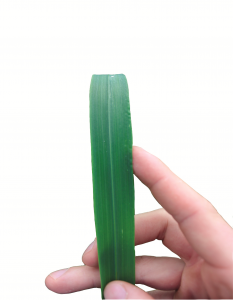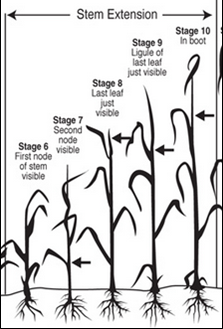 David Hunsberger, Central Region Coordinator
David Hunsberger, Central Region Coordinator
As the 2015 Summer crop matures, planning for the next crop continues. Winter annuals are an excellent choice for either cover cropping or forage production. In diverse mixtures or monocropped several principles are worthy of review.
Planting Date: Proper timing of seeding is critical. For best survival and volume of spring harvest several weeks of growth and tillering of new plants is needed. Tom Kilcer has demonstrated significant yield differences between early September and early October plantings of triticale. Winter barley is the earliest of the traditional small grains to be seeded (barley will not overwinter well on wet soils or in traditionally winter survival challenged areas) Triticale and wheat are next on the calendar for planting date followed by spelt and ending with rye that can tolerate and survive later planting. Planting dates for winter grains in New York can start as early as mid-August, however, early plantings may require management of the fall growth.
Planting Depth: Planting depth is critical for good emergence, proper plant growth and winter survival. Proper depth is 1-2”. For later planting dates plant at deeper end of range, NOT shallower. This helps with winter survival and to minimize frost heaving potential.
Fall Fertility: Soil tests are very valuable to evaluate the basal levels of fertility of your fields. Manures can be utilized to provide N for fall growth but avoid high rates. Research has documented significant yield increases with addition of approx. 30 lbs. of N in the fall.
 Fall Growth Management: If you have over 8 inches of autumn growth you should graze or clip to 4- 6 inches to reduce the potential for smothering and snow mold.
Fall Growth Management: If you have over 8 inches of autumn growth you should graze or clip to 4- 6 inches to reduce the potential for smothering and snow mold.
Spring Fertility: In the spring at green up soil bacteria is not active and available N is limiting. For straight cereal stands consider applying up to 100 units of N at green up. This will drive top growth and also ensure that the harvested forage has adequate feed quality protein content. It is advisable to supply a sulfur source too as complete protein requires S and N for the plants synthesize.
Harvest Management: For high quality forage harvest at Feekes scale 9, “flag leaf”. Do not wait until boot stage! Rye will mature earliest in spring followed by barley, then triticale, then wheat , and lastly the spelt. Legumes such as clovers, or hairy vetch are excellent companions and promote soil health. Annual ryegrass can also be introduced as a com-paninon in a diverse mixture. Kings has many mixes avail-able to assist or custom mixes can be made with enough leadtime. As you consider your winter annual crop begin to plan for the spring crop to follow, keep C:N ratios in mind, if corn is to follow including legumes is even more critical to help the residue to break down and nourish the crop.
Speak to an expert at King’s AgriSeeds now at 1-717-687-6224 or email us at [email protected].
